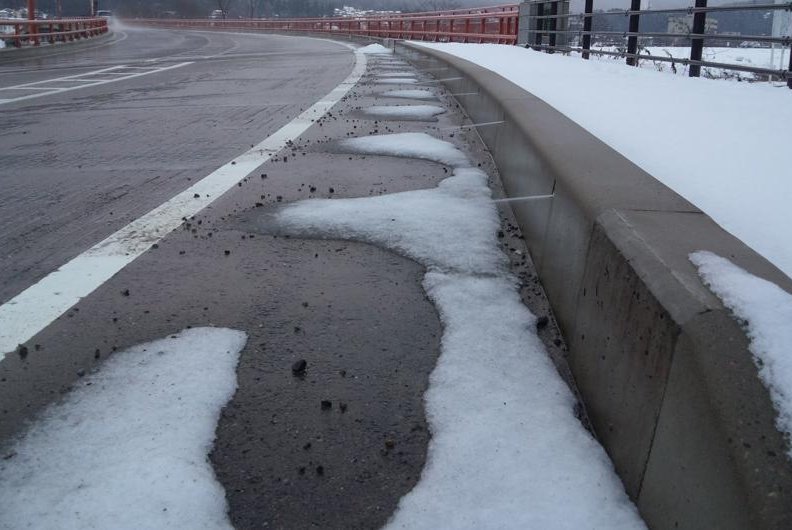A wax additive could allow roads to deice themselves during boats of cold, snow weather. Photo by Drexel University
Sept. 13 (UPI) -- A simple wax additive could keep roads and sidewalks ice-free during a winter storm.
According to new research, wax added to concrete can store energy until it needs to be released. The released energy can warm the concrete and de-ice the road.
Scientists detailed the potential of "phase change materials" like paraffin oil in a new paper, published this week in the journal Cement and Concrete Composites.
"Phase change materials can be incorporated into concrete using porous lightweight aggregate or embedded pipes and when PCM transforms from liquid to solid during cooling events, it can release thermal heat that can be used to melt ice and snow," Yaghoob Farnam, an assistant professor of engineering at Drexel University, said in a news release. "By inhibiting the formation of ice and snow on the pavement or bridge surface, the use of PCM may reduce or eliminate the need for deicing chemicals/salts, snowplowing or both -- thus saving money and positively influencing the environmental impact of such operations."
Paraffin oil is a common ingredient in wax products like candles, polishes and cosmetics. The material is cheap and chemically stable. As it turns from a liquid to a solid, it releases thermal energy. The oil can be fine-tuned to solidify at certain temperature ranges, so the additive could be designed to release energy during cold weather.
Researchers tested the d-icing capabilities of concrete slabs featuring paraffin-filled pipes and a light-weight paraffin-treated aggregate. During testing at temperatures between 35 and 44 degrees Fahrenheit, snow on the control slab remained frozen, while slabs intersected by paraffin melted away the snow within 25 hours.
In the first round of testing, paraffin-filled pipes were more efficient than the paraffin aggregate. When scientists tested the different slabs at temperatures below freezing, they found the concrete aggregate treated with paraffin proved more effective at keeping the slab free of snow and ice.
"The gradual heat release due to the different pore sizes in porous light-weight aggregate is more beneficial in melting snow when concrete is exposed to variety of temperature changes when snow melting or deicing is needed," Farnam said. "We believe that using porous lightweight aggregate can be potential way of incorporating phase change materials in concrete as it is easy to be implemented in practice and can cover environmental conditions of various locations in the U.S. dealing with snow, especially melting snow or deicing in roads and bridges in the Northeast."
Researchers plan to test the paraffin aggregate at larger scales. The technology could eventually be installed on highways and airport runways, but first scientists need to make sure paraffin doesn't negatively effect the pavement's durability or traction.















